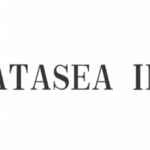West Texas Intermediate crude recovered after hitting a one-week low on Monday but gains were capped before a government report that may show a modest increase in US crude oil inventories, despite a projected decline in distillate fuel stockpiles. Prices received further pressure as markets awaited the outcome of FOMCs two-day meeting where policy makers are expected to further scale back Feds monthly bond purchases.
On the New York Mercantile Exchange, WTI crude for settlement in March traded at $96.10 per barrel at 8:28 GMT, up 0.37% on the day. Prices shifted in a daily range between $95.63 and $96.16 per barrel. The US benchmark fell to a 1-week low of $95.21 on Monday and settled the day 1% lower.
Meanwhile on the ICE, Brent futures for delivery in the same month rose by 0.51% to $107.23. Prices varied in a daily range between days high and low of $107.26 and $106.76 a barrel respectively. The European benchmark slid by 1.1% on Monday, the most in three weeks, narrowing its premium to WTI to $10.97, based on closing prices.
Jonathan Barratt, chief executive of commodity research firm Barratts Bulletin in Sydney, said, cited by CNBC: “The recovery in oil is a knee-jerk reaction to the steep fall in prices we saw overnight. The outlook is weak as some of the numbers out there, particularly from China, are a bit of a concern.”
The market remained under pressure ahead of a government report that may show US crude oil inventories rose for a second consecutive week in the seven days through January 24th. The Energy Information Administration will likely say crude stockpiles rose by 2 million barrels last week and motor gasoline inventories jumped by 1.7 million, according to the median estimate of seven analysts surveyed by Bloomberg. Prices however drew support on expectations for a 2.5-million drop in US distillate fuel stockpiles, a closely-watched category during the winter which includes heating oil and diesel.
The industry-funded American Petroleum Institute will release its separate private report later today. APIs statistics however are deemed less popular than EIAs data as they are based on voluntary information from operators of refineries, pipelines and bulk terminals, while the government requires reports to be filed with the EIA.
Also in investorss focus, policy makers are expected to further trim Feds quantitative easing program at FOMCs two-day meeting starting today. The alleged reduction in the central banks monthly bond purchases would lift the US dollar, reducing the appetite for riskier assets such as oil and making dollar-denominated raw materials costlier for foreign currency holders.
China economic outlook
The oil market continued to be under pressure on signs of slowing economic activity in China, the worlds second biggest consumer. A preliminary private report showed on Thursday that declining new orders led to the first contraction in China’s manufacturing activity in six months, confirming that a mild slowdown late last year has extended into 2014. The HSBC Flash China Manufacturing PMI plunged to 49.6, defying analysts’ projections for a minor increase to 50.6 from December’s final reading of 50.5. Meanwhile, the Flash China Manufacturing Output Index registered at 51.3 in January, down from 51.4 in December, hitting a three-month low.
Earlier in the week, China’s National Bureau of Statistics reported that output in factories, mines and utilities grew at a slower pace in December, fueling concerns over economic slowdown and demand for riskier assets. China’s industrial production grew by 9.7% on an annual basis last month, the slowest since July, trailing analysts’ expectations for a drop to 9.8% from November’s 10% advance.
Meanwhile, China’s economy grew by 1.8% in the fourth quarter, the government agency reported, underperforming projections that expansion would ease to 2.0% after posting at 2.2% in the three months through September. China’s GDP expanded by 7.7% in 2013, matching the median estimate of analysts surveyed by Bloomberg. This was also the same expansion rate as in 2012, which however was the slowest since 1999.
Market players also remained cautious over any rise in global crude supplies. OPECs top exporter Saudi Arabia, together with Kuwait and the United Arab Emirates have increased output in order to offset supply outages in Libya and Iraq and limited exports from Iran due to Western sanctions. A resolution to these issues however would add as much as 2 million barrels per day to the global market, dragging on prices unless other members of the group scale back their output. A U.S. official said on Monday that Iran will begin talks on a long-term nuclear deal with the five permanent members of the UN Security Council and Germany next month in New York.





